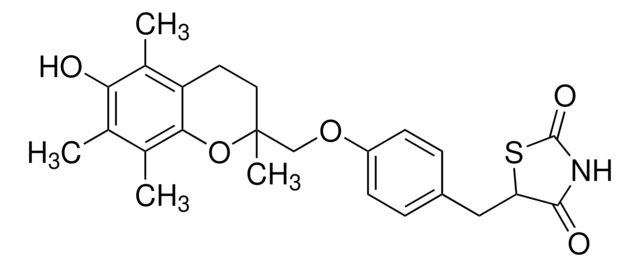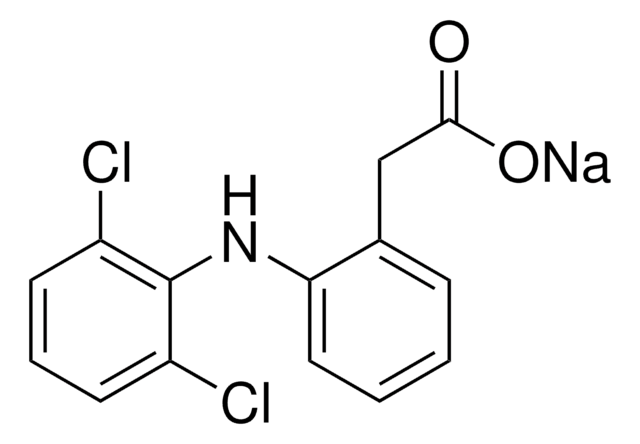Wichtige Dokumente
SML0150
Tolcapon
≥98% (HPLC)
Synonym(e):
3,4-Dihydroxy-4′-methyl-5-nitrobenzophenon, Ro 40-7592
About This Item
Empfohlene Produkte
Assay
≥98% (HPLC)
Form
powder
Lagerbedingungen
desiccated
Farbe
yellow
Löslichkeit
DMSO: ≥15 mg/mL
Ersteller
Roche
Lagertemp.
2-8°C
SMILES String
Cc1ccc(cc1)C(=O)c2cc(O)c(O)c(c2)[N+]([O-])=O
InChI
1S/C14H11NO5/c1-8-2-4-9(5-3-8)13(17)10-6-11(15(19)20)14(18)12(16)7-10/h2-7,16,18H,1H3
InChIKey
MIQPIUSUKVNLNT-UHFFFAOYSA-N
Angaben zum Gen
human ... COMT(1312)
Suchen Sie nach ähnlichen Produkten? Aufrufen Leitfaden zum Produktvergleich
Anwendung
Tolcapone has been used in methyltransferase assay in human embryonic kidney 293 cells.
Biochem./physiol. Wirkung
Leistungsmerkmale und Vorteile
Signalwort
Warning
H-Sätze
P-Sätze
Gefahreneinstufungen
Aquatic Acute 1
Lagerklassenschlüssel
11 - Combustible Solids
WGK
WGK 3
Flammpunkt (°F)
Not applicable
Flammpunkt (°C)
Not applicable
Hier finden Sie alle aktuellen Versionen:
Analysenzertifikate (COA)
Die passende Version wird nicht angezeigt?
Wenn Sie eine bestimmte Version benötigen, können Sie anhand der Lot- oder Chargennummer nach einem spezifischen Zertifikat suchen.
Besitzen Sie dieses Produkt bereits?
In der Dokumentenbibliothek finden Sie die Dokumentation zu den Produkten, die Sie kürzlich erworben haben.
Unser Team von Wissenschaftlern verfügt über Erfahrung in allen Forschungsbereichen einschließlich Life Science, Materialwissenschaften, chemischer Synthese, Chromatographie, Analytik und vielen mehr..
Setzen Sie sich mit dem technischen Dienst in Verbindung.









